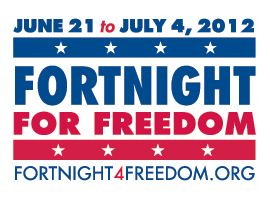Balance in Fiction Writing
 Balance.
Balance.
A few days ago, Ellen Gable Hrkach posted a great blog on common errors to avoid in writing fiction. One item she mentioned got me to thinking, namely too much dialogue.
What’s ‘too much’?
A lot of times that depends on the genre you’re writing. Clearly, screenplays and graphic novels rely almost exclusively on dialogue.
Novels, however, require a blend of narrative, description, introspection and dialogue. The ratio of one to the other changes with both prevailing ‘style’ and with genre. Novels written a century ago utilize long passages of description and flowery stretches of dialogue, whereas the trend today is for faster, tighter construction in all areas, especially dialogue.
How do you know if your manuscript has a good balance? Part of this comes down to voice, that elusive factor that makes your work yours. However, we’ve all had the experience of reading a book and finding ourselves skipping over passages, maybe even pages. If we skip too much, we’ll put the book down – and if that happens, we may never pick it up again.
Not good, if you’re the author.
Next time this happens, stop and analyze why you lost interest. Chances are there was too much of one element on the page. Too much description. Too much internal monologue, or perhaps too much narrative. Sometimes too much dialogue, but if that’s problematic, it’s more likely because the ‘voices’ of the characters are too similar. They need to be so distinctive that the reader knows who is speaking. Even so, if they go on for pages, the reader may tire. (For more on dialogue, click here.)
One helpful technique is to analyze your manuscript for the different elements and highlight the pages. Margie Lawson teaches a method for this in her Deep Editing classes. Choose different colors for narrative, description, emotion, dialogue, and internal thought, etc., then go to town with your highlighters (or crayons, or whatever your inner child wants to play with!). If one color dominates a page, revision might be in order. One of my critique partners occasionally says of my work, “This section has too much yellow.” Since we’ve both taken Lawson’s class, I immediately understand what the problem is. My work flows better if the page has a rainbow of colors. Another application of this technique is to apply your highlighters to one (or more) of your favorite published books.
Keep in mind there is no ‘one size fits all’ in fiction. Thank God! Otherwise, reading would get boring! Check out a wide variety of books to see how other authors manipulate the elements that create story.
For instance, action novels such as Lee Child’s Reacher series use lots of dialogue, but it’s nearly all less than one line long. Child also uses relatively long stretches of description/narrative, and he tends to go with one or the other at any given point. His books are effective, powerful, and popular.
Debbie Macomber takes a more blended approach in her wildly successful women’s fiction and romance novels. You will find narrative, description, introspection and dialogue on nearly every page.
Many authors are exploring screenwriting classes, some for the challenge of breaking into a new field, but most for a better understanding of both story structure and use of dialogue. While this is an excellent strategy for honing of specific elements, written fiction is more effective and more engaging when the entire spectrum of tools are used to create the final product.
The subject of balance also touches on pacing, which is a topic deserving of its own post. Narrative, description, and interior monologue can slow the pace—although skillfully applied, they can ratchet up the tension until it is unbearable. Dialogue tends to speed things up.
As you can see, there isn’t a cut-and-dried answer to ‘how much is too much’. But a willingness to analyze and evaluate your writing will always make it stronger. Look at your work with an eye toward what you want to accomplish in a given scene. Learn to use all the tools in your toolbox. Buy books on the craft of writing. Review them once in a while. Take classes. Be open to feedback from trusted colleagues, and then decide how (or if) you will apply their advice.
Find the best balance for your story and your voice.
Have you struggled with this aspect of writing? Do you have tips to share? Please do!








 The United States was founded by numerous groups fleeing Europe in search of the freedom to practice their religion, free from tyranny or persecution. Now, after hundreds of years, our government – once envisioned to be a tool to protect those freedoms – has seen fit to attempt to restrict the practice of specific Catholic beliefs. Many other Christian people recognize this assault on freedom of religion, and stand in solidarity with us.
The United States was founded by numerous groups fleeing Europe in search of the freedom to practice their religion, free from tyranny or persecution. Now, after hundreds of years, our government – once envisioned to be a tool to protect those freedoms – has seen fit to attempt to restrict the practice of specific Catholic beliefs. Many other Christian people recognize this assault on freedom of religion, and stand in solidarity with us.
